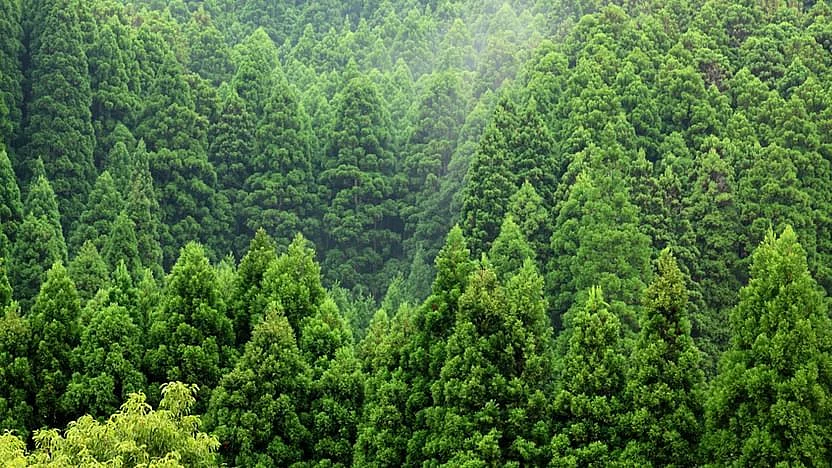Land For Mining, Agriculture Inflates India’s Total Forest Cover
29.5% of land classified as forests in India’s government records does not have any forest cover, as per ISFR, 2019.

advertisement
As much as 29.5% of land classified as forests in India’s government records does not have any forest cover, according to the India State of Forest Report (ISFR), 2019. Some of these lands have been diverted for road building and mining while some others are agricultural land.
Of 767,419 sq km of land recorded as forest area in governmental records, 226,542 sq km has no forest cover, said the report by the Forest Survey of India (FSI) released on 30 December 2019. This is misleading because areas that are not forests anymore continue to be tagged as forest areas.
“Recorded forest area is what the forest departments go by as their official record because it acts as their land record,” Kanchi Kohli, a senior researcher at the Centre for Policy Research, a New Delhi-based nonprofit, said. In essence, she said, recorded forest area denotes the jurisdiction of the forest department.
The recorded forest area could include, for instance, land that belongs to the local forest department but has no forest cover because it has been used for developmental activities such as road building and mining or is under agricultural use, according to Kohli.
How Diverted Land Legally Remains Forest Area
When the forest department issues a letter for forest clearance, a standard clause is inserted into these letters that the "legal status of diverted forest land shall remain unchanged” even after the forest is cleared.
Lands that are currently under shifting cultivation, those that have unsettled claims under the Forest Rights Act (FRA) and those areas where indigenous tribal people historically live could also be tagged as “recorded forest area without forest cover”, Kohli added.
In response to questions about what falls within the meaning of ‘recorded forest area without forest cover’, Subhash Ashutosh, Director General, FSI said that
Areas under shifting cultivation do not form part of ‘recorded forest area’, Ashutosh said, noting that lands in the northeast are largely community-owned. In cases where shifting cultivation lands have forest cover, “they could have been classified as part of total forest cover in the country”, he added.
“These [shifting cultivation] lands are those over which communities have practiced shifting cultivation over generations,” said Amba Jamir, a policy analyst with the Sustainable Development Forum, an NGO working towards sustainable development in Nagaland. Generally, a community will continue to use these lands and not cut a primary forest.
“Shifting cultivation lands have never been statistically surveyed,” Jamir said, in response to whether these lands could have been included as part of recorded forest area. “So, because of a lack of survey data, we cannot say for sure if shifting cultivation lands have been included as forest area in the official records of the government.”
The Dangers of Forest Area Without Forests
Classifying diverted land as a forest area raises the question of how deforestation activities are being accounted for.
How is the ISFR even accounting for forest losses due to diversion for development projects and degradation due to repeated annual forest fires?” said Praveen Bharghav, a former member of the National Board for Wildlife, a statutory body that advises the government on wildlife conservation and environmental clearances for projects.
He also asked what kind of methodology is used when FRA claims are accepted on lands that are recorded as forests. “The ISFR is doing the nation a great disservice,” by not focusing on the fragmentation of forests by deforestation which is a crucial challenge to the forest cover, Bharghav said.
Degradation is a bigger problem because deforestation is compensated by plantation activities under the Forest Conservation Act, Ashutosh added.
The Forest Conservation Act calls for afforestation in non-forest or degraded lands in cases where forest land is diverted for non-forest purposes such as mining and road building.
The other concern with classifying certain areas as being forest areas without forest cover it can form the basis for tagging such lands as degraded and undertaking plantation activities without the knowledge of the local ecosystem.
This area could, for example, be grasslands, but classification as forest land without forest cover could endanger this land, especially as it is “under the management of a forest department which has routinely destroyed non-forest biomes through ill-advised tree planting”, M D Madhusudan, an independent researcher, explained.
Even if the area was a forested landscape that lost its forest cover, plantation activities could still be damaging. “Such areas would invariably contain rootstock,” Bharghav said. Natural regeneration, with protection from fire, felling, grazing, etc. can only be done with data and a knowledge of that ecosystem.
‘Environment Ministry Has Better Guidelines’
General tags such as ‘recorded forest area without forest cover’ could become the basis for undertaking ill-thought-out afforestation activities and this has, in fact, happened in the past, Ashutosh said. The environment ministry has better guidelines now and we try to understand the land and the different tree and plant species, he added.
(This article was originally published on IndiaSpend and has been republished with permission.)
(At The Quint, we question everything. Play an active role in shaping our journalism by becoming a member today.)